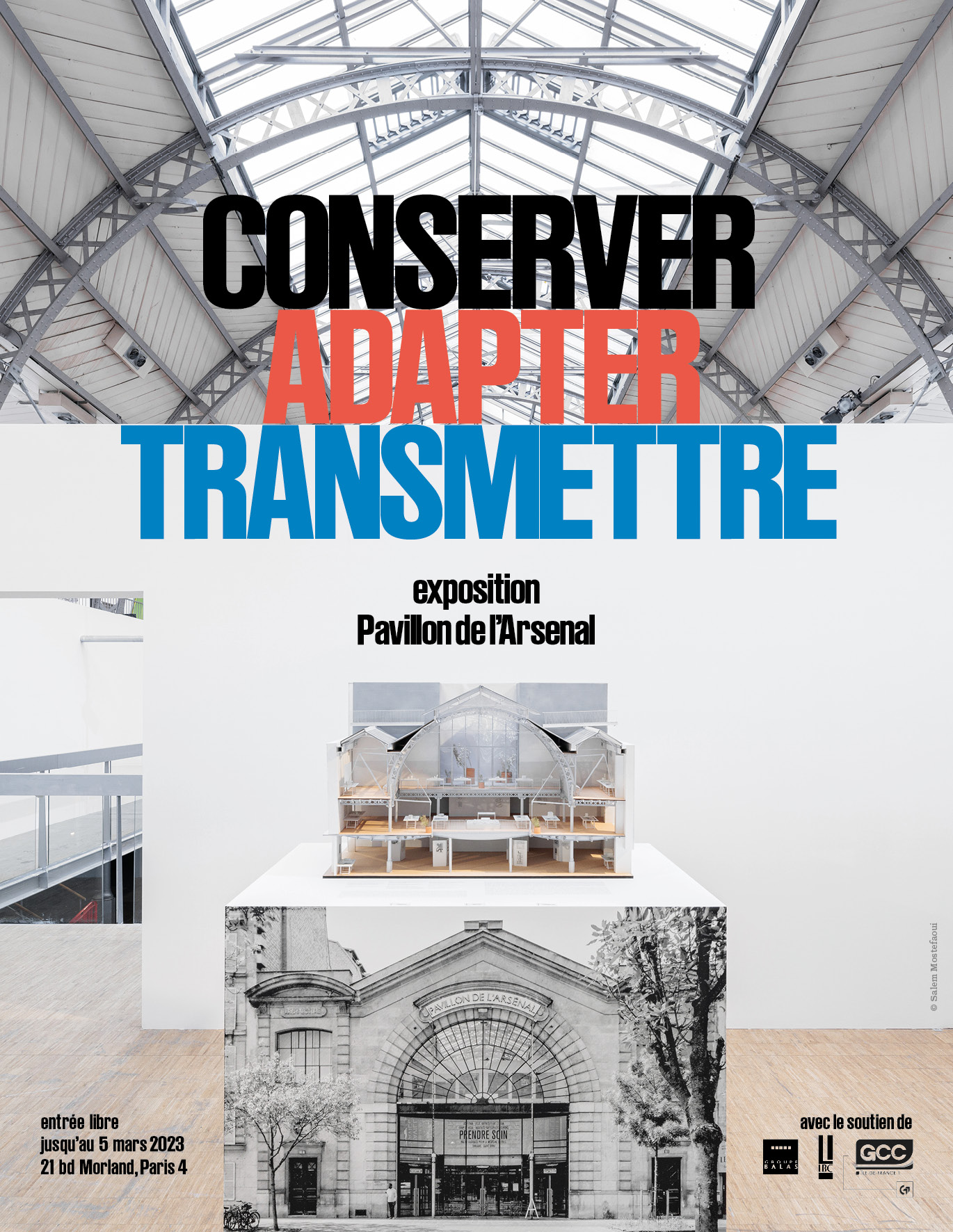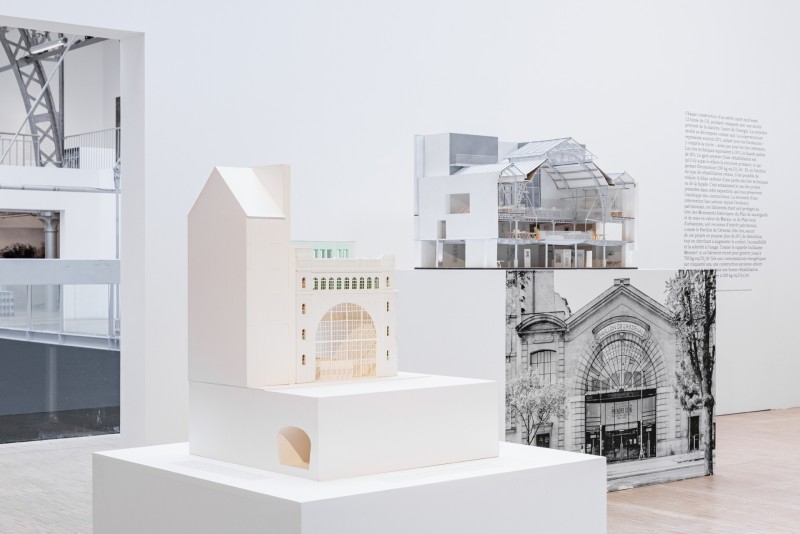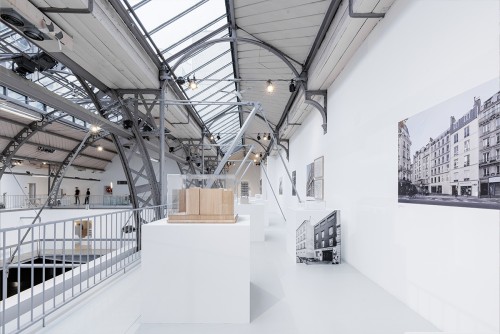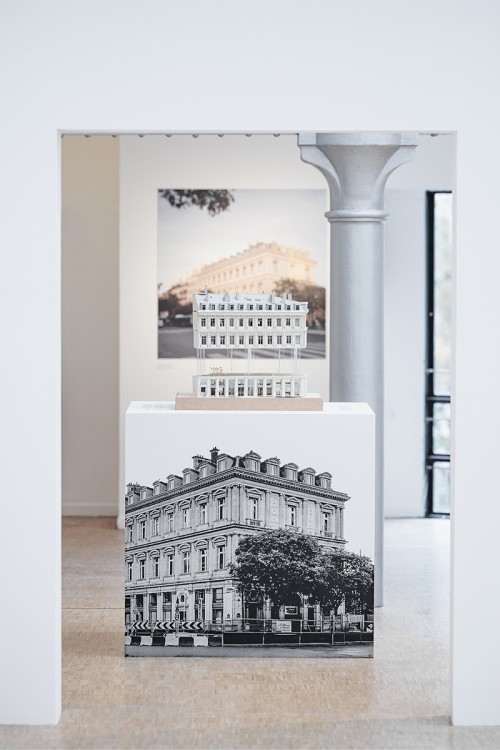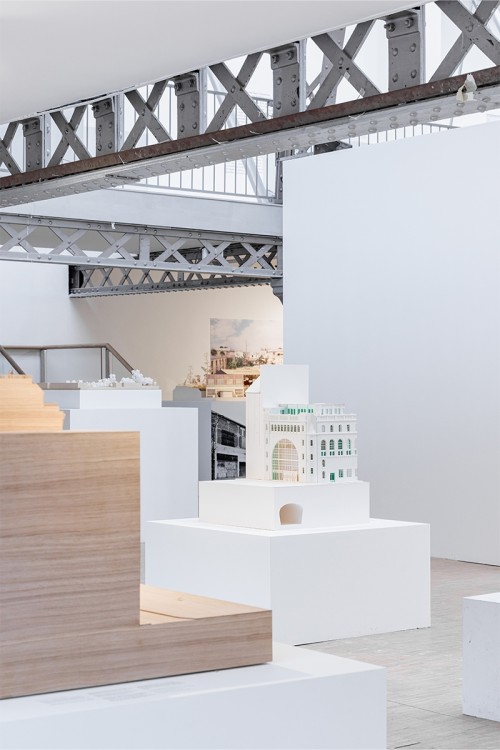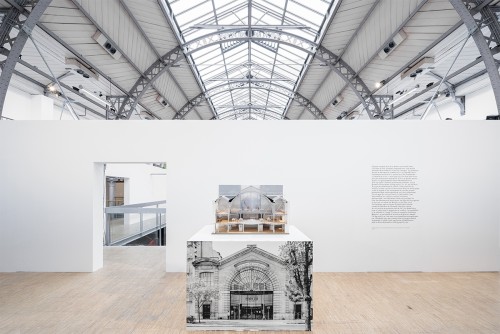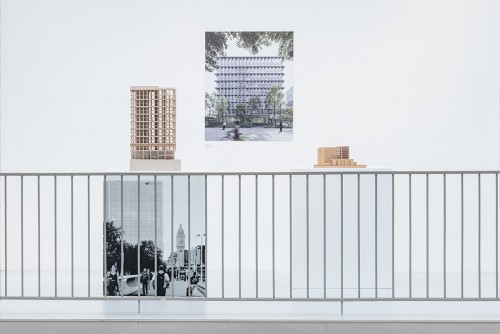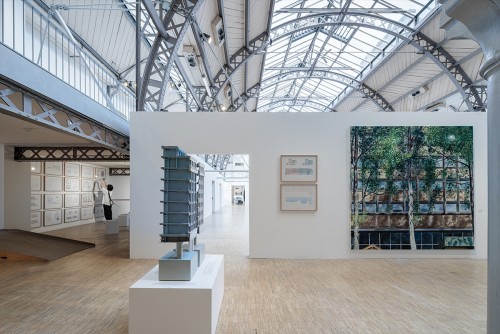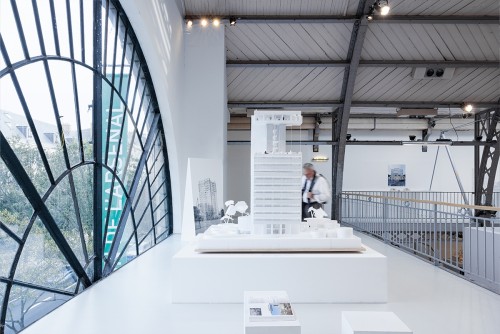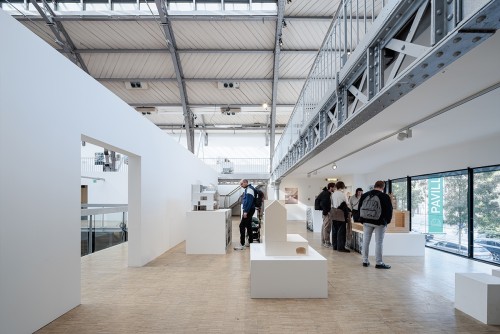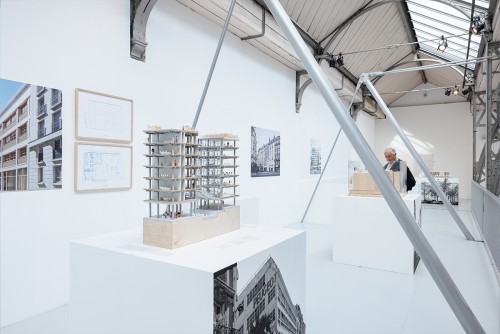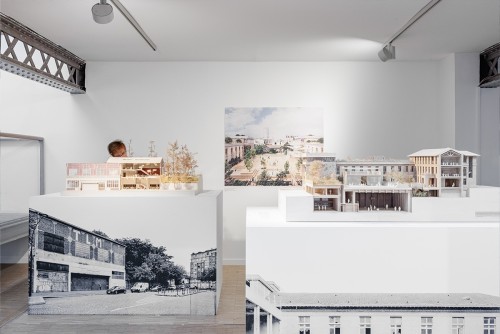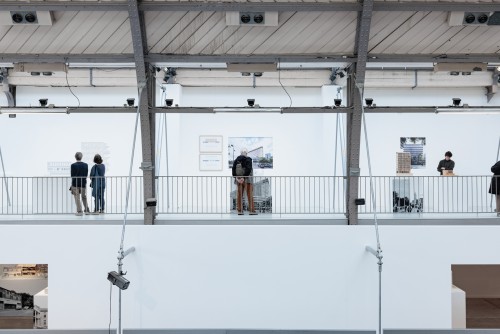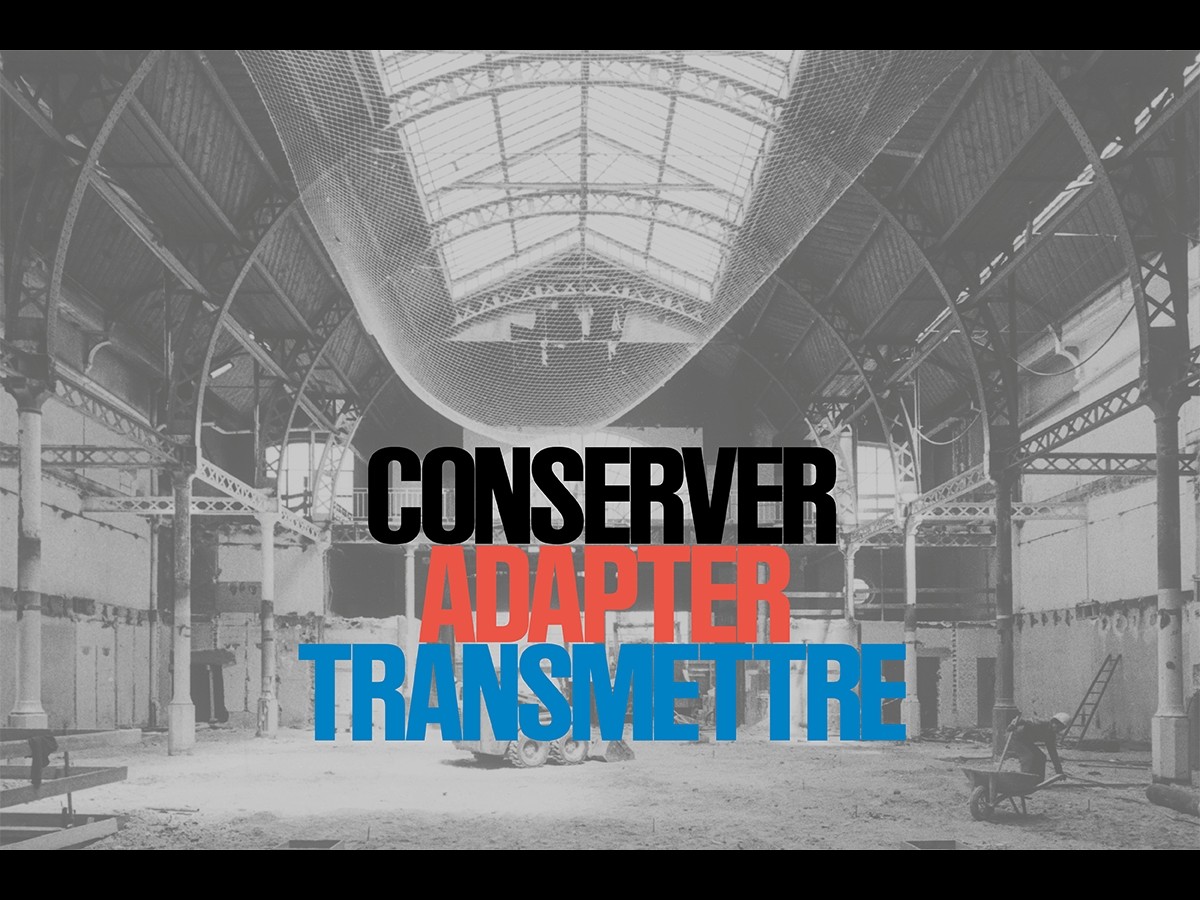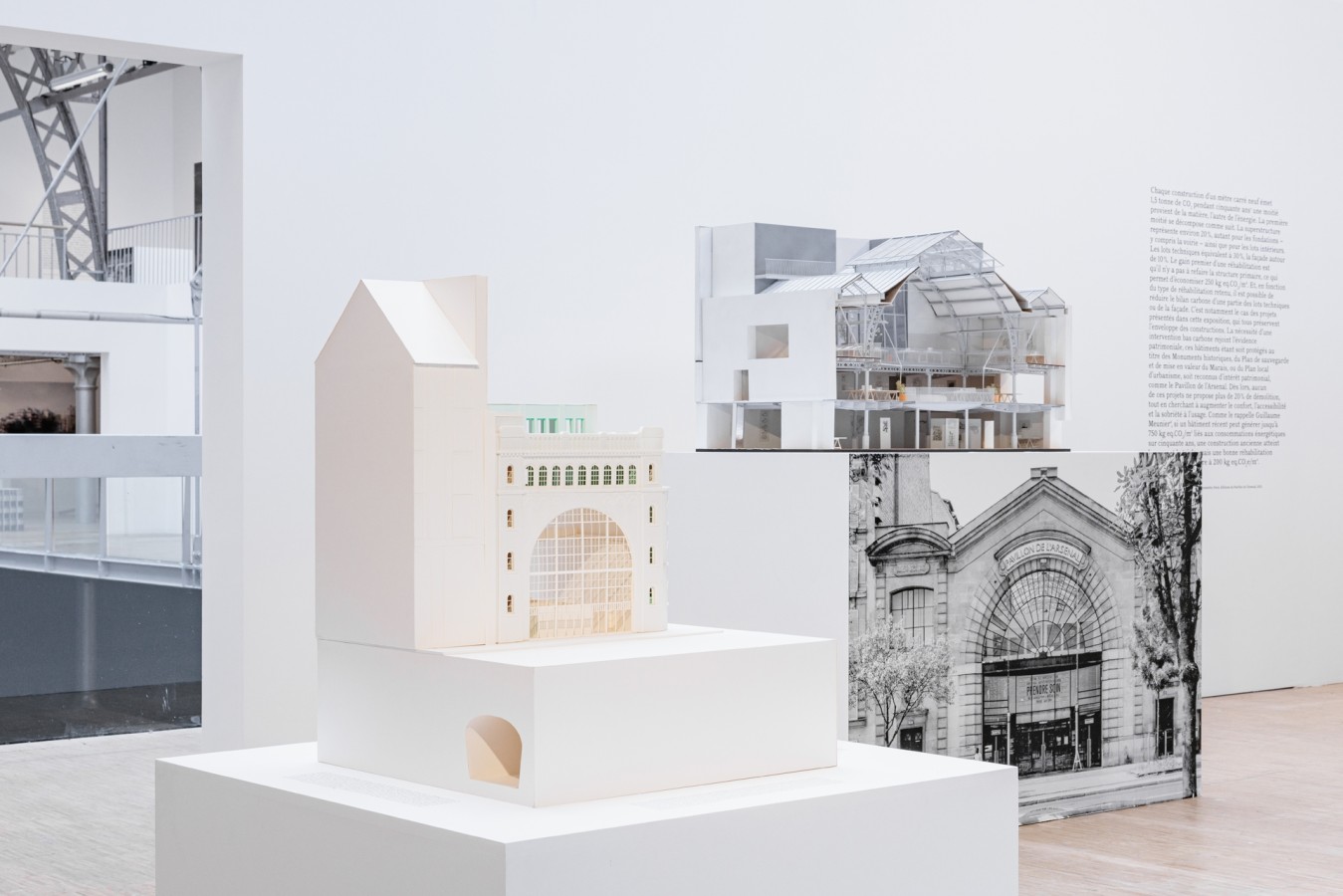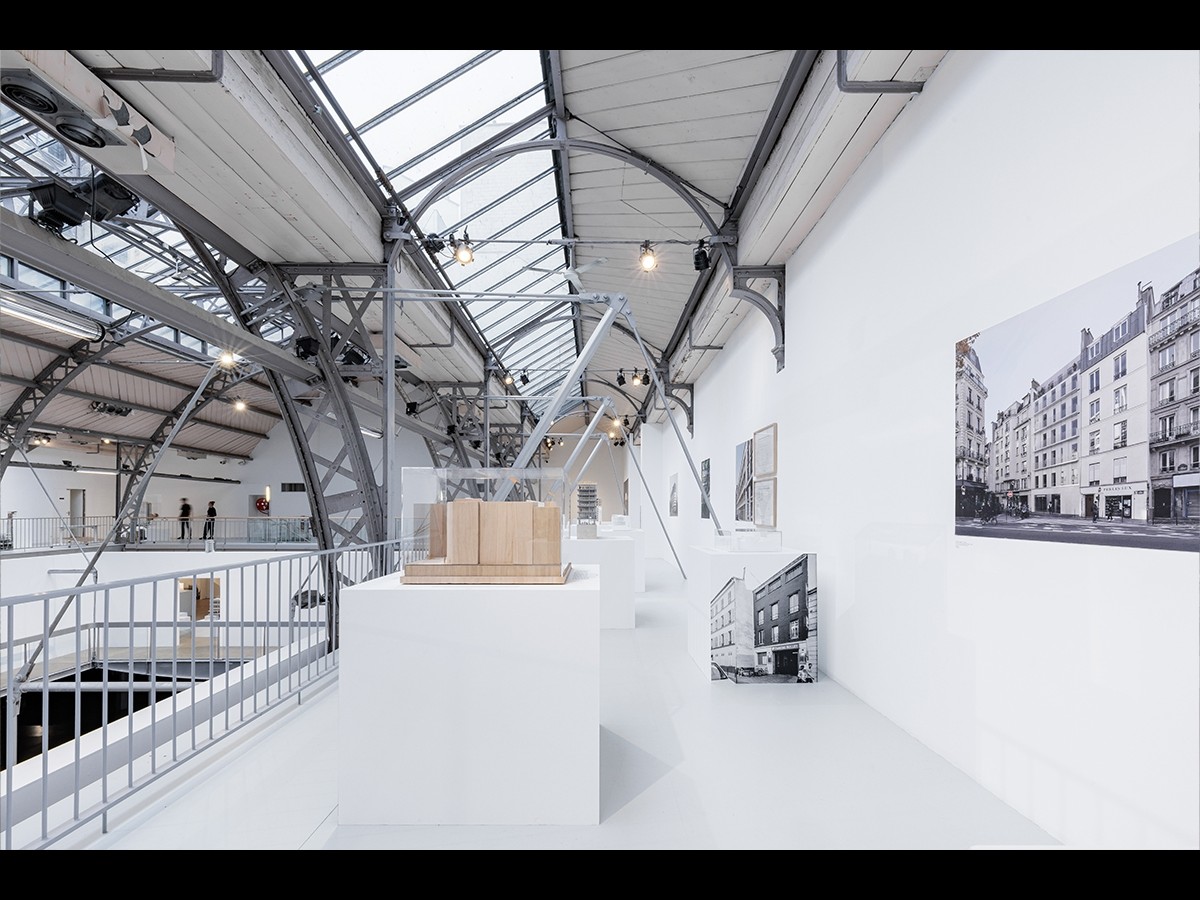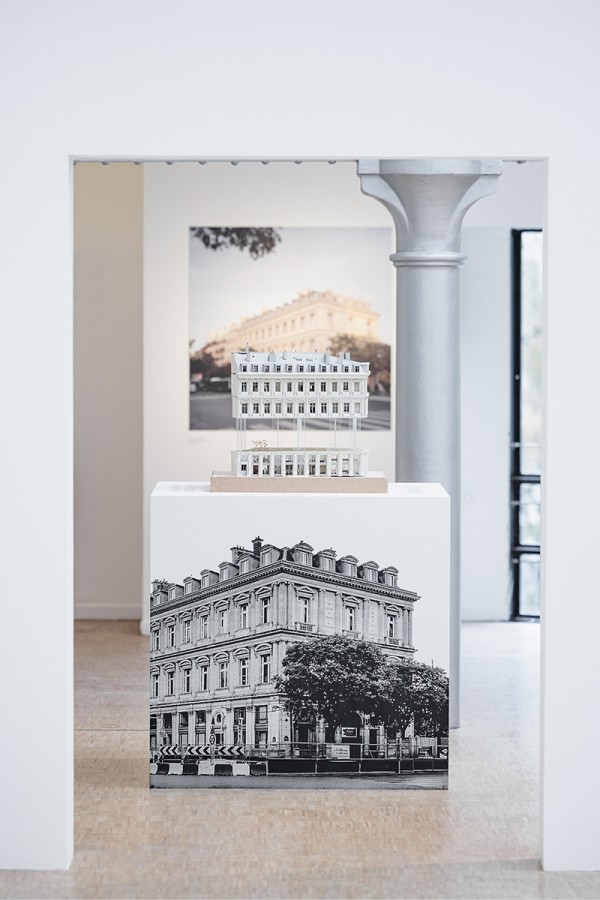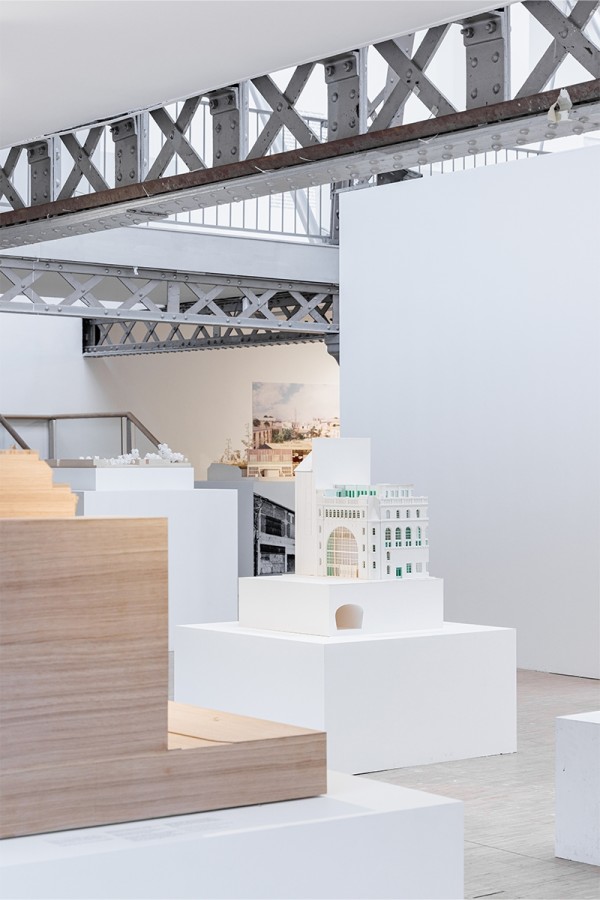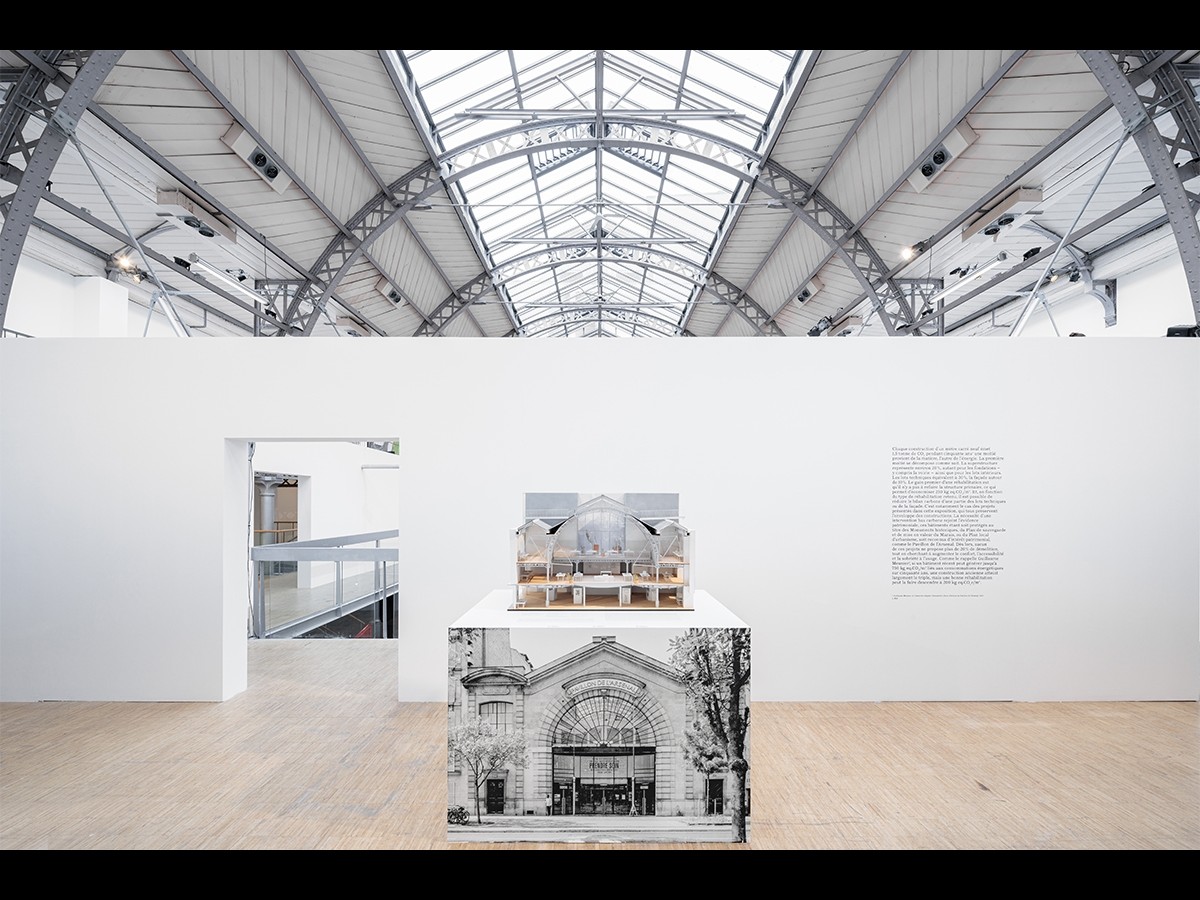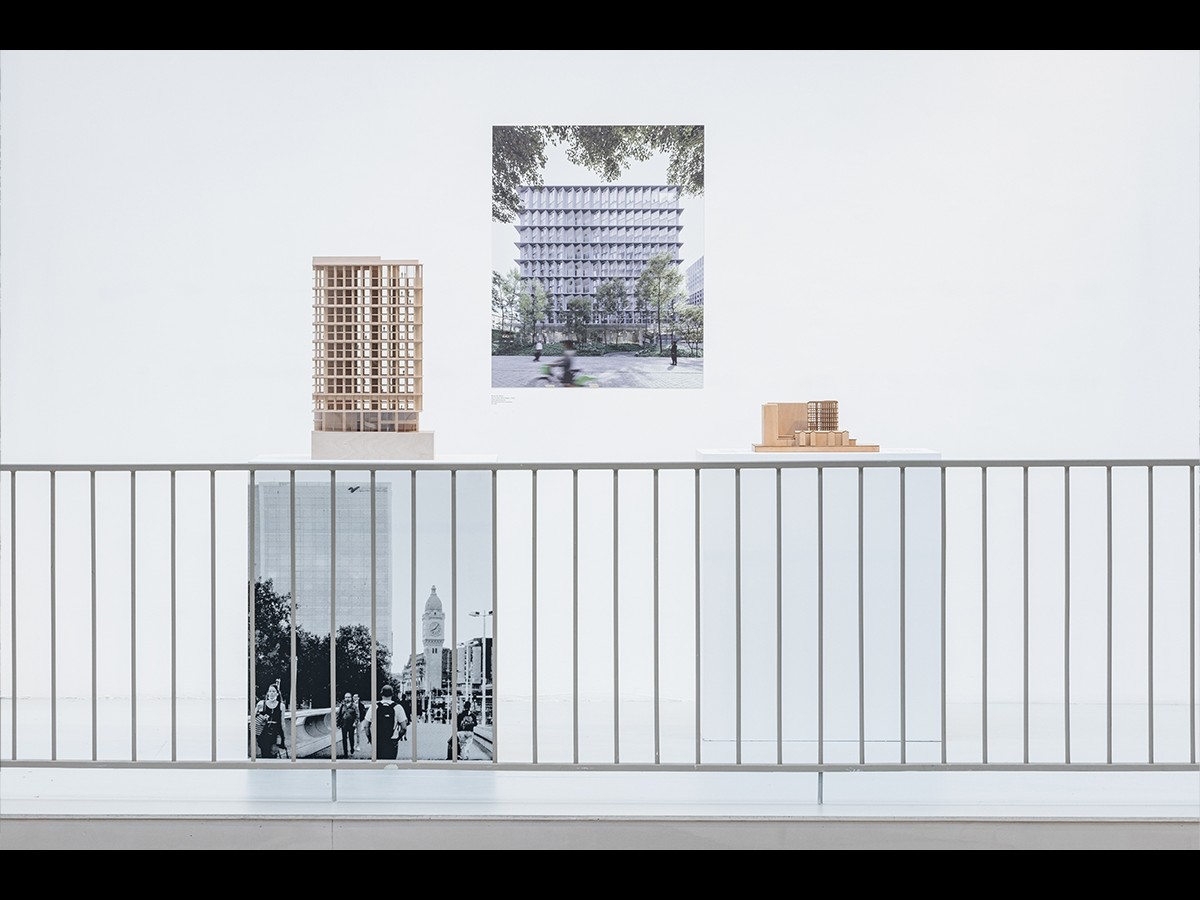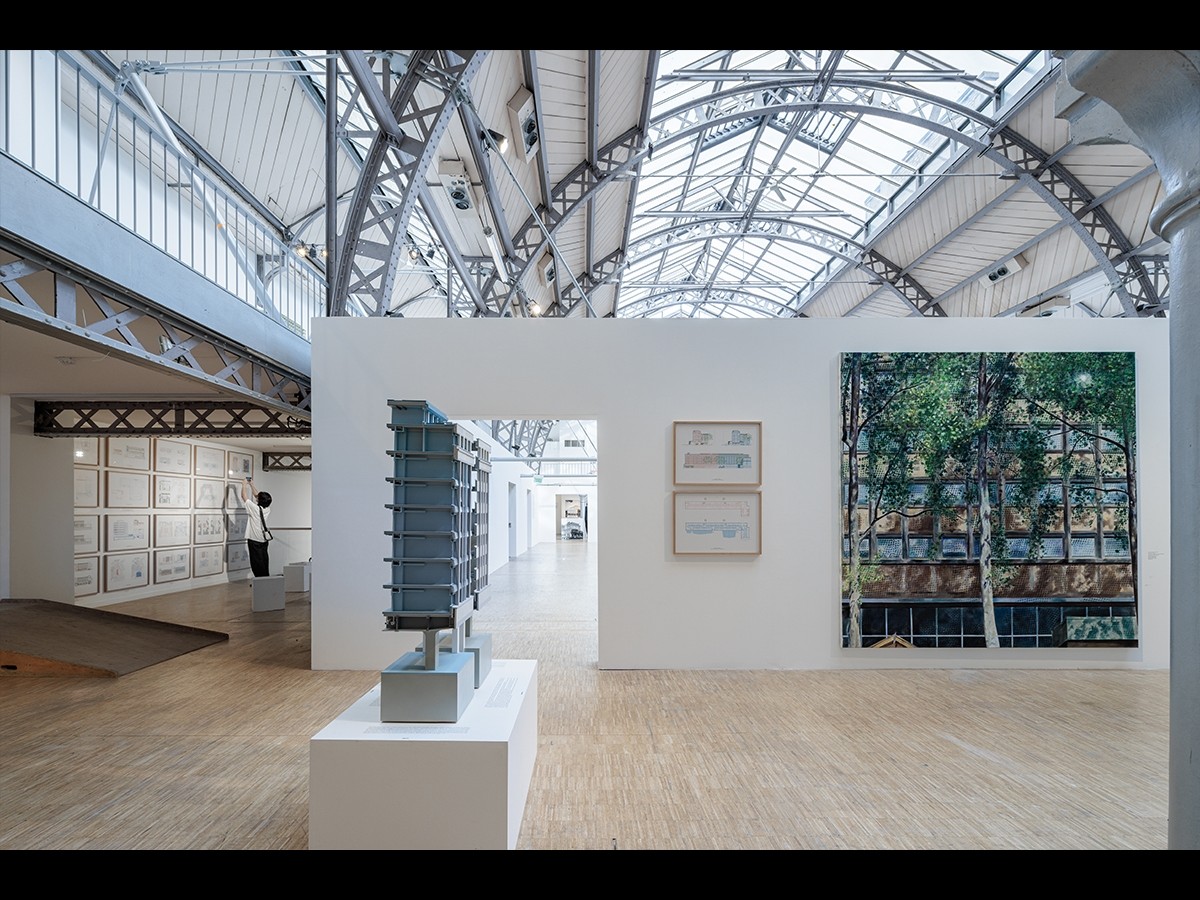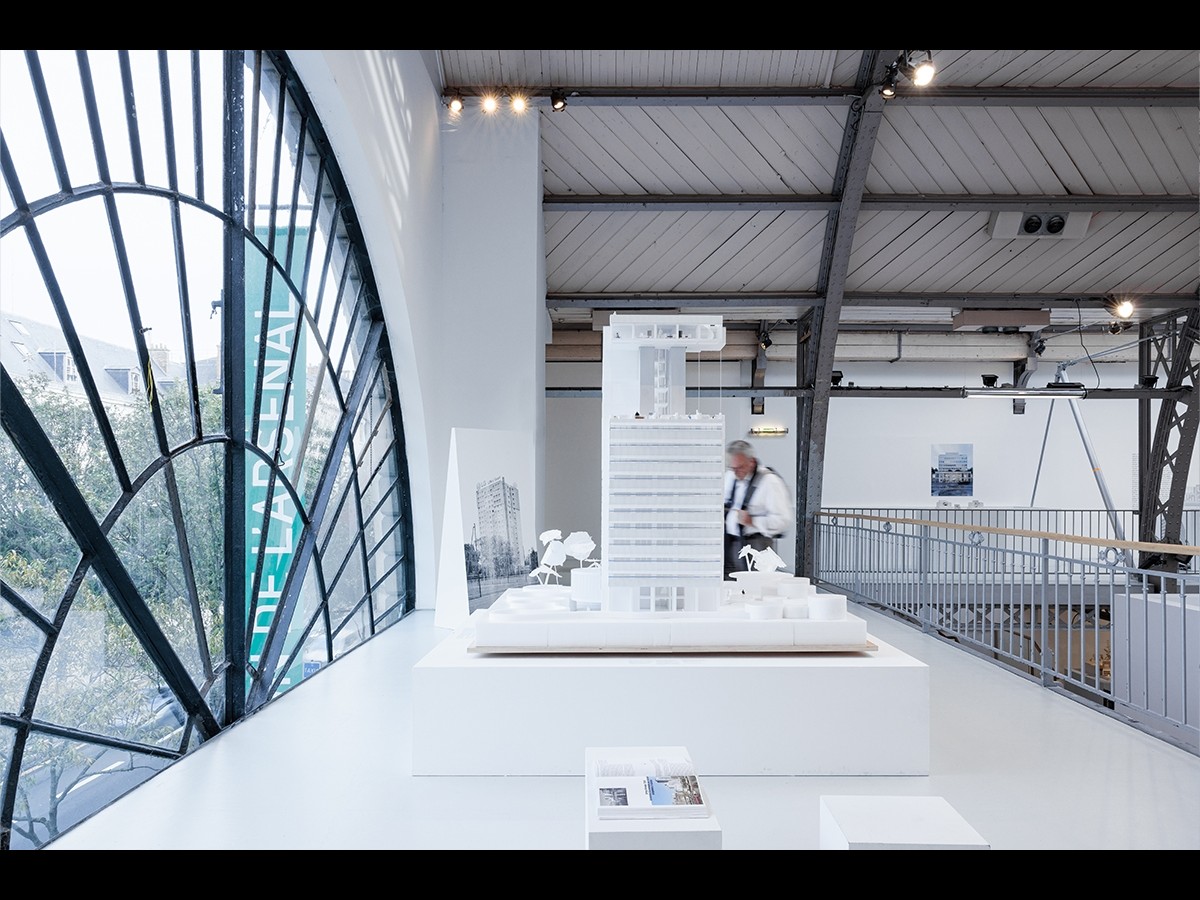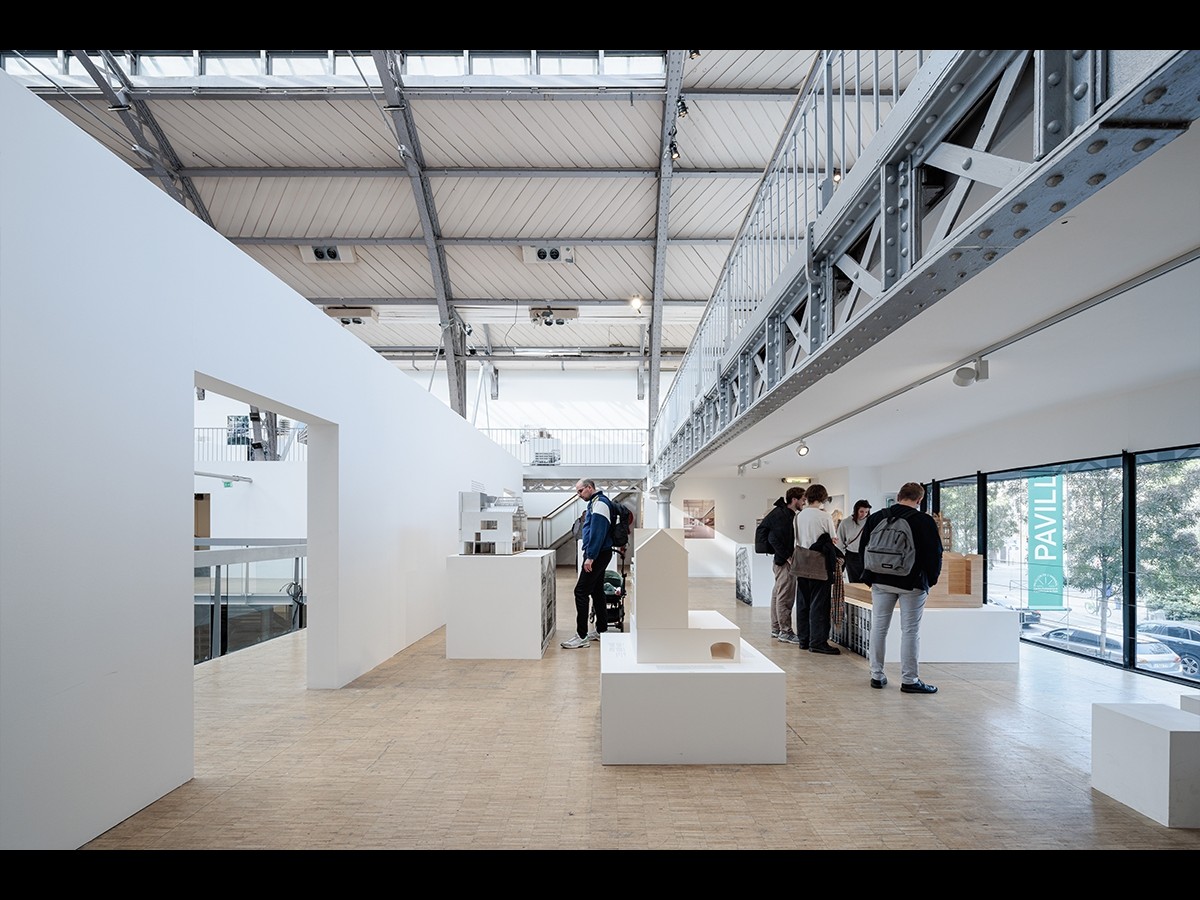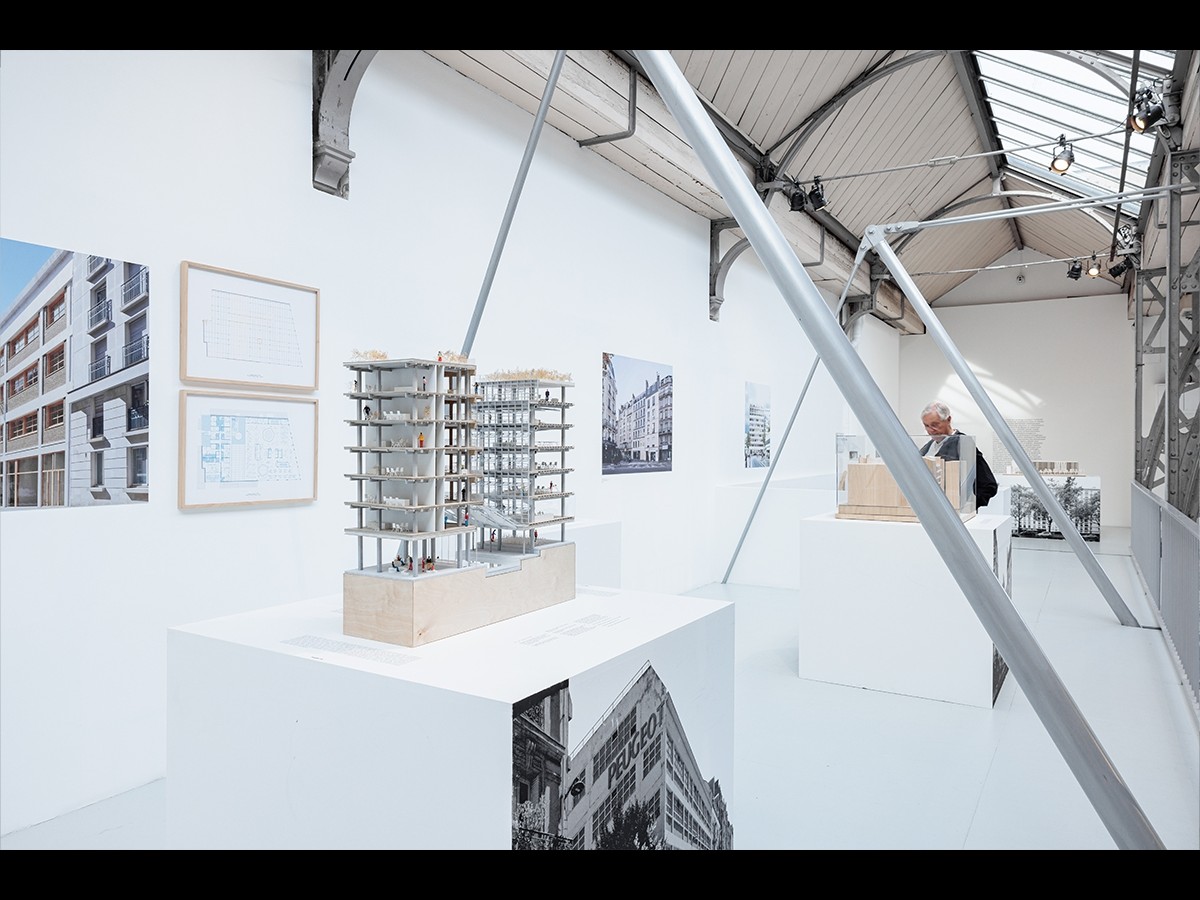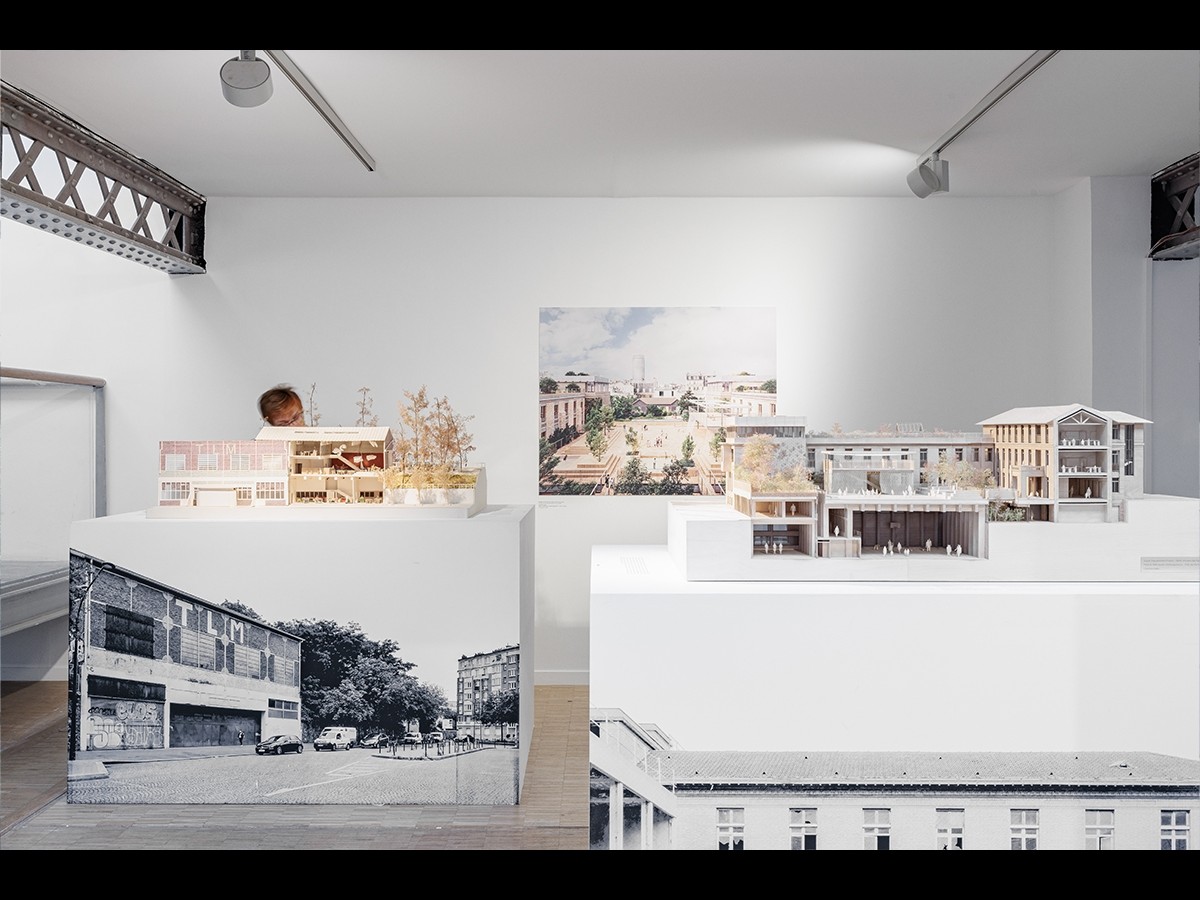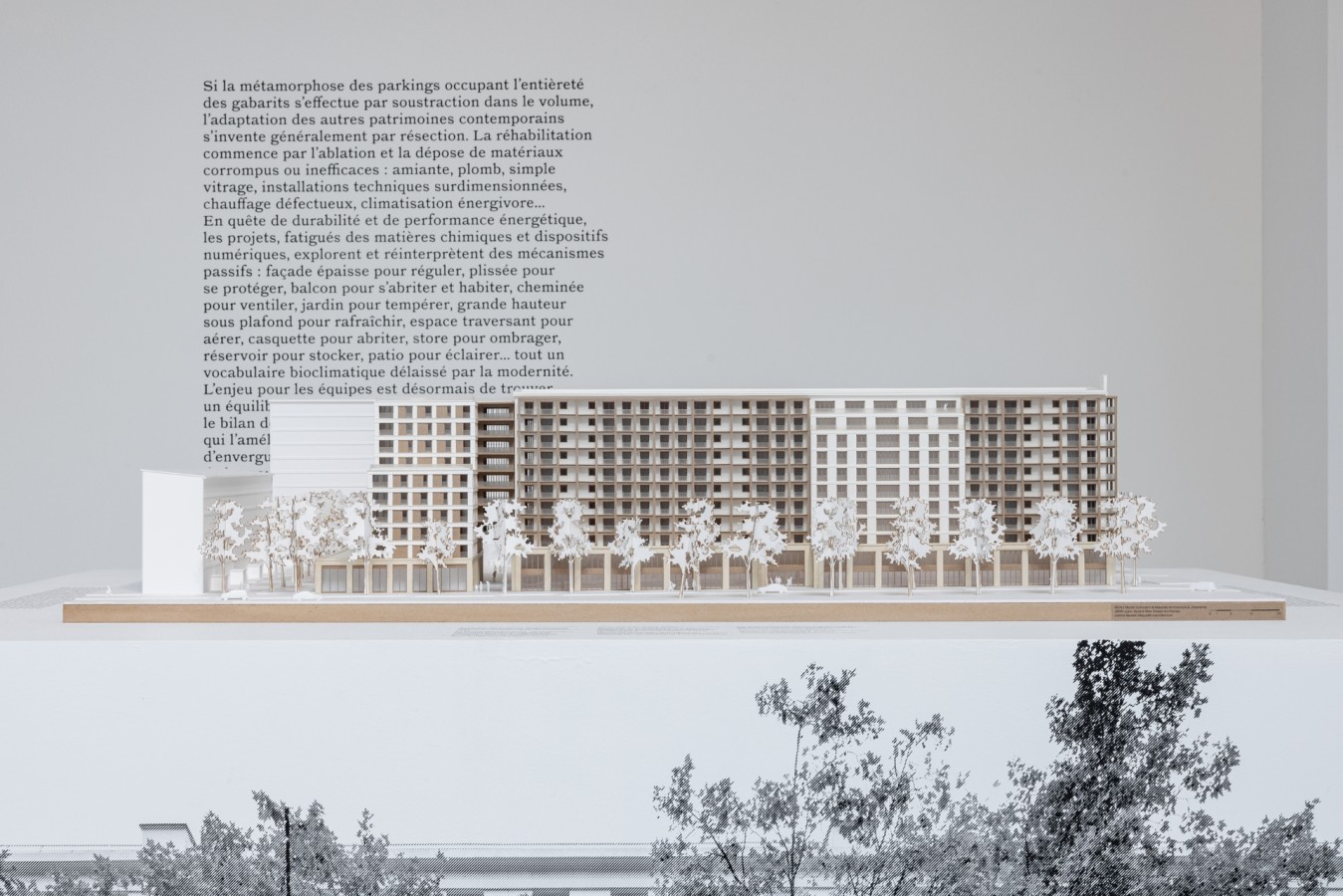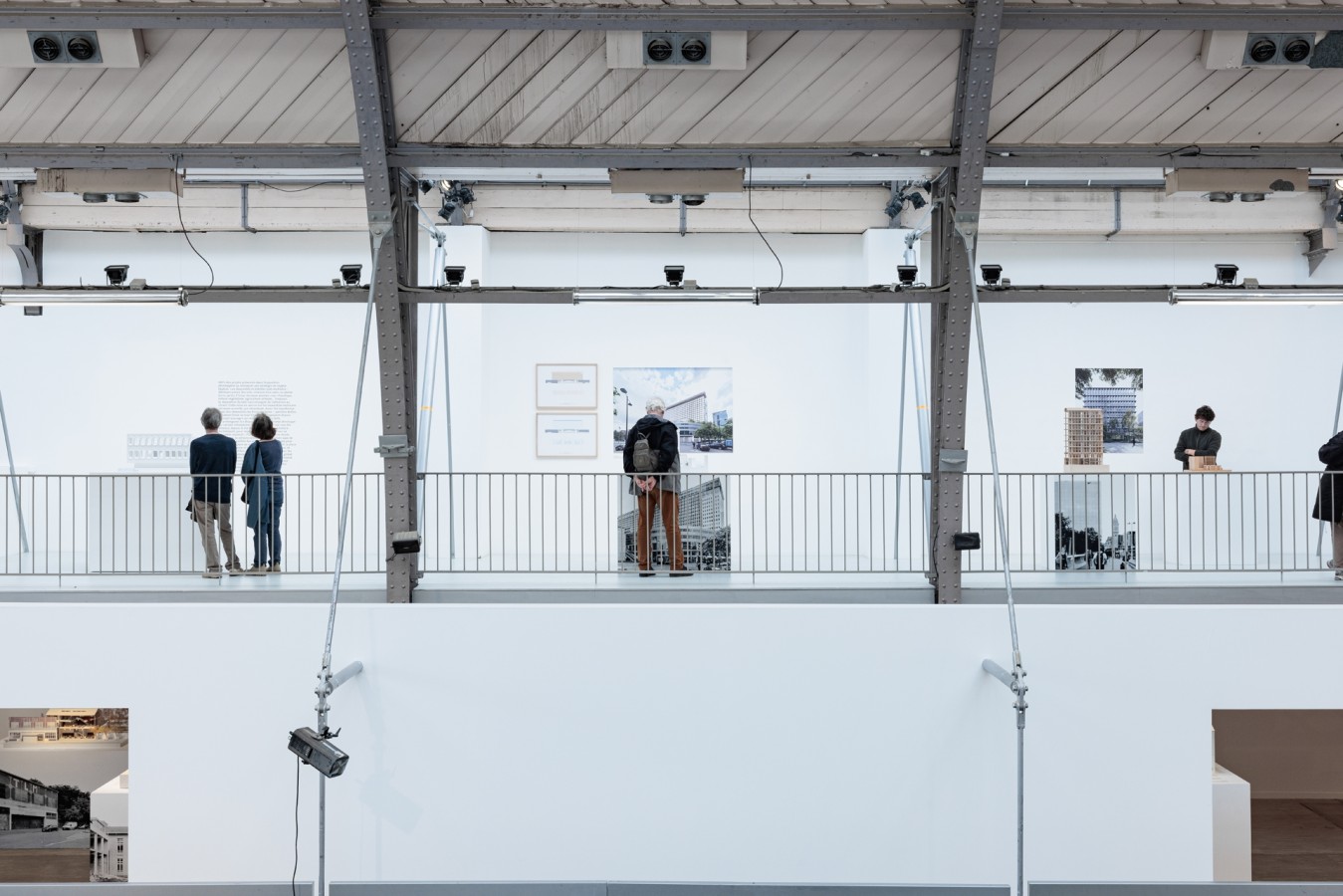Carbon emissions are associated with all stages of a building’s life—from design to use. The construction industry is one of the highest contributors to climate change and the best way of reducing this footprint is therefore to shift away from demolition and rebuilding, to conserving existing structures (thus storing carbon), and adapting forms and materials in order to hand down buildings that are sounder in their operation and their urbanity to future generations. The principle of rebuilding the city on itself is not new, but carbon causes us to radically adjust for a new era. It compels and questions all types of built heritage and all stages of the project life cycle.
Through the analysis of some forty award-winning renovation, rehabilitation, or adaptive reuse projects, the permits of which were filed in Paris between 2020 and 2022, the Conserver Adapter Transmettre [Conserving, Adapting, and Handing Down (Our Built Heritage)] exhibition and publication intends to report on these new production methods that bring together climate change issues, heritage considerations, and programs tailored to contemporary expectations. The multiple responses, revealed through scale models and drawings specifically prepared by their architects, provide an overview of the fundamentals for the Parisian architecture of the future. Striving for sustainability and energy performance, they make use of simple, passive devices rather than electric or digital systems. This translates into renewed geometries that often reinterpret familiar forms, including façades that are both pleated (a feature that provides improved protection from the elements) and thick (to optimize regulation), chimneys that are used for ventilation, gardens for cooling, high ceilings to leverage vertical stratification of the air in the summer, dual-aspect dwellings to provide cross airflow ventilation, overhangs for shelter, blinds for shade, water tanks for storage, patios for daylighting purposes, and more. An entire bioclimatic vocabulary that had been forgotten by modernity is reconstructed here in a plurality of materials that focus on dry construction systems (to minimize public nuisances during the building work), bio- and geo-sourced materials such stone, hemp, earth, and straw (to reduce the project’s footprint) and re-using building elements that are directly deconstructed on site or taken down in the vicinity (in order to extract less resources), while also contributing to the rewilding of the city by unsealing impervious surfaces and revegetating mineral surfaces.
A full 70% of planning permissions filed in Paris concern transformation projects and this share is increasing steadily. These transformations open up a highly stimulating field of exploration for urban and architectural disciplines by combining the principles of resection, reparation, and the rationalization of construction. Through the prism of the economy of means, the respect for the work of previous generations, and taking a long-term approach to the buildings that contribute to and enact the city, hybrid objects are being invented, which are both sparing in their implementation and their use. These constructions hold the promise of better addressing global warming and the increased scarcity of resources. They combine three key commitments: to conserve, to adapt, and to hand down built heritage to future generations.




